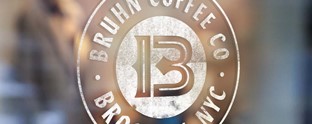Five minutes with Andy Baron

Andy Baron, executive creative director at global branding agency, Turner Duckworth, speaks to Transform magazine about why brands should invest in what makes them distinctive, not necessarily 'huggable.' Baron argues that to really be successful, brands need a heart, and a brain, and courage, in mostly equal measure.
What is meant by ‘huggable’ brands? How can brands invest in what makes them distinctive rather than huggable?
It might be only a tiny bit of a stretch to say that most brands today want to be your actual friend. Wildly active and conversational social media accounts for bath towels, chicken drumsticks, underwear, sparkling CBD beverages. Newer-to-world brands with people names like Billie, or Casper, or Harry’s. And most briefs that come into our studio, no matter the sector, come with a plea for warmth, humanity, approachability.
The truth is, the real best-case scenario is that consumers want to buy your products and services because they are good, useful, relevant, distinctive. I promise you they do not want to hang out, or for you to tell them that ‘banks are cheugy’ as spotted in a recent campaign. That approach may work over the short-term, but brands that have stood the test of time have all invested in what makes them unmistakable, not in what scores them cool points.
The benefit of distinctiveness is that it pays off in the long run. While a red and white split, a gold medallion and a script do not scream ‘human’ or ‘approachable’ or ‘warm’, they do scream Campbell’s Soup. And Campbell’s soup, because of our own real experiences, is a brand that will always feel welcoming.
What are the branding ramifications for a world where companies are increasingly held accountable for their actions and values?
One of the biggest consequences of holding companies accountable will be deflection, mostly by brands that previously had hiding places. The awareness that consumers expect brands to be ‘good’ will create a widening gap between the virtues being communicated, and the realities of the goods and services being produced. In other words, we will see a continued rise of ‘we’re good, we promise’ branding.
We will see more cynical offsets. Brands like Juul, created to deflect from the obvious issues around cigarettes, designed to convince you that vaping is harmless when the reality is that it’s not. We’ll see plant-based alternatives on the menus of brands that still very much trade in things that are not as virtuous. We’ll see marketers continue to put the burden on consumers, for instance, by urging us to dispose of and recycle their polluting containers (a dynamic famously kickstarted by an ad featuring a single tear in 1971). We’ll see more cases of cultural co-opting where brands show up in conversations they have no business being a part of, in ways that make us all very uncomfortable.
The good news in all of this is that we’ll also see many more new-to-world, better-for-all brands come to market.
How has the emergence of a technology driven culture impacted branding?
We’re still getting over the 1990s connotations of technology as this cold and uncaring thing. And because of that we continue to overcompensate with literal humanisation. You can see it on display in the instances of certain tech-driven brand symbols. For example, Airbnb uses a heart, Facebook uses a hand, Amazon a mouth and so on. We’re also seeing it in brand photography. Try to spend a day of your life without seeing an ad with an extraneous disembodied human hand holding a product or pack in the air. While that trend isn’t specifically connected to tech per se, in many ways it’s a direct result of it.
In what ways does a brand go about finding the characteristics that best fit its positioning?
The simplest way to think about it is with an eye for a long time horizon. It’s a pitfall to write a positioning, or create work against one only during a particular moment in culture. It also helps to not be too specific, and to remember that the audience you’re trying to reach does not need to be aware of what your brand positioning is.
I’ve never worked for Nike so I’m likely getting this wrong in some way (see what I mean about the audience?) but it’s clear that they have always existed to help people reach their full potential. It’s in everything they do. It’s a timeless idea that is big enough to build an incredibly strong brand around, and allows them to talk about both product and culture as needed.












